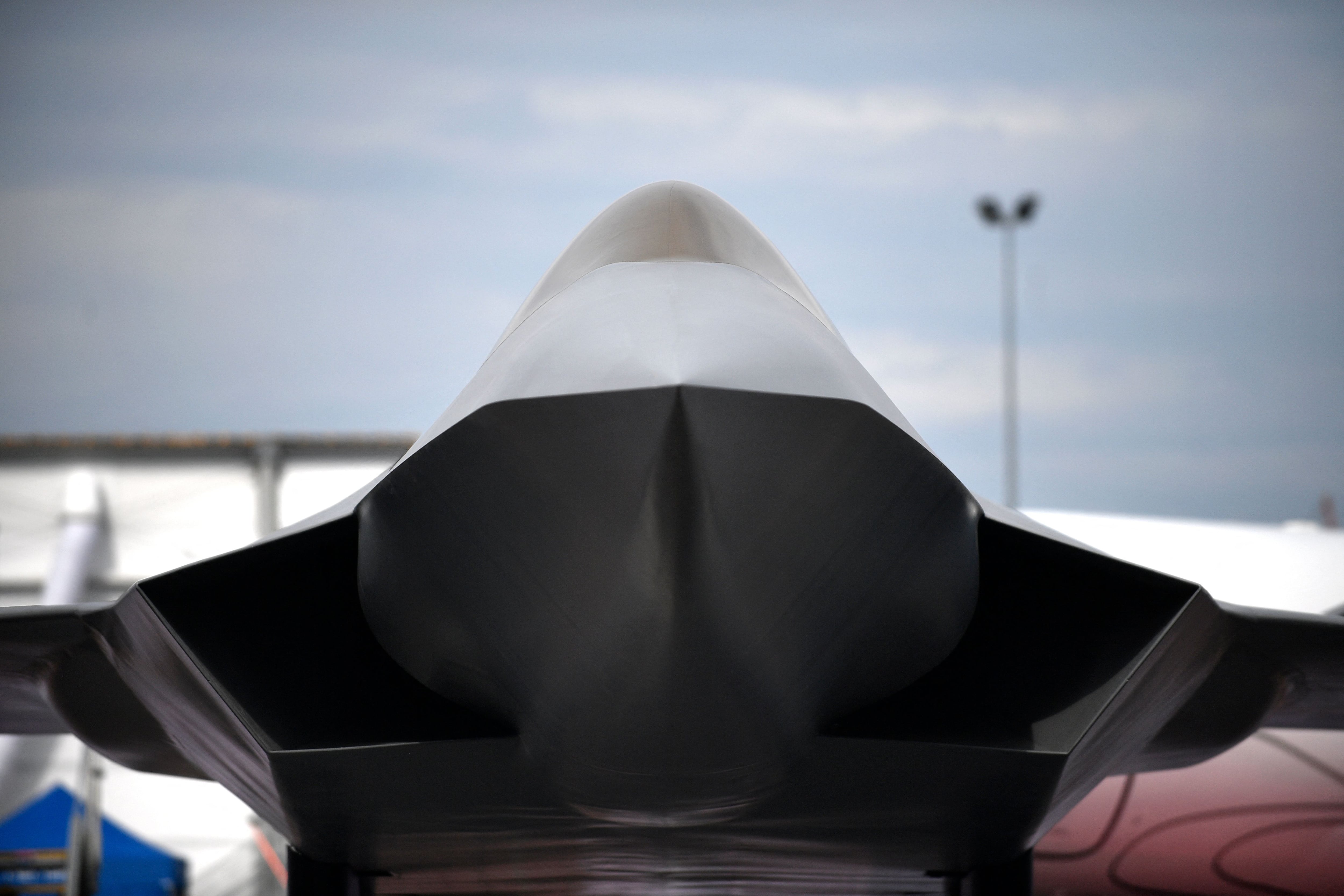COLOGNE, Germany — German air force chief Lt. Gen. Ingo Gerhartz wants to see faster progress in the fielding of new military drones than what the time line for the envisioned trinational Future Combat Air System can offer.
“We can have remote carriers out of that project much much earlier,” the air force chief told Defense News in an interview, referring to a class of drones that is envisioned to accompany the FCAS program’s central, sixth-generation warplane on future missions. “And we need to have it much, much earlier.”
Gerhartz’s comments reflect a certain degree of angst in military circles here about the fluid target date for the German-Franco-Spanish project – currently pegged at “2040-plus,” he said in an interview – which could risk putting Berlin behind the curve.
Asked about what timing he had in mind, Gerhartz demurred, saying only the contracting for the FCAS drones was far enough along to support the fielding of unmanned technologies before the totality of the program comes online.
Remote carriers is catch-all term for different types of drones with tasks that range from reconnaissance to electronic jamming to strike. Smaller ones also could be used to swarm enemy air defense positions with the goal of overwhelming their radars and targeting software.
The idea is for the pilot of the FCAS program’s manned warplane, dubbed the Next Generation Fighter, to command all unmanned elements from the cockpit depending on the nature of a given mission.
Germany, with lead contractor Airbus Defence and Space, has the lead for remote carrier development within the overall program. The German and French arms of pan-European missile maker MBDA are also involved, along with Spain’s SATNUS consortium representing local specialists Sener, GMV and Tecnobit.
According to MBDA, the company envisions leaning on existing missile technologies in developing its remote carrier offerings. They include the Taurus cruise missile – sought by Ukraine for its defense against Russia, as well as the Spear 3, Metor and Scalp missiles.
Gerhartz said he also wants to push the tempo on a dedicated strike drone for Germany. The larger vehicle class is internationally dubbed a UCAV, short for unmanned combat aerial vehicle.
France’s national lead for FCAS, Dassault Aviation, has been developing such a weapon for years, in parallel to the trinational program, Gerhartz noted.
“Now were are looking for partners to push UCAV, or loyal wingman, on our side,” he said. “We need that earlier.”
After the interview, when asked about details, a Luftwaffe spokesman wrote in a statement that the service is looking for “synergies” with partner nations grappling with the same problem of integrating manned and unmanned strike platforms into scenarios for “collaborative combat.”
Meanwhile, the FCAS program has had a wobbly history, mainly fueled by mistrust between Airbus and Dassault that has at times bled into the bilateral political discourse between Germany and France over the usefulness of any bilateral defense programs at all.
According to a Nov. 1 report in the London-based Times, citing unnamed sources, German Chancellor Olaf Scholz was considering abandoning the €100 billion ($107.3 billion) program in favor a British-led rival effort dubbed Tempest because he had grown impatient with what he viewed as too capricious of a partner in Paris.
A spokeswoman for the German ministry of defense said Berlin is sticking with FCAS, calling reports to the contrary “false.”
Contractors began building an demonstrator in March, putting the project on a “good path,” the spokeswoman said.
Sebastian Sprenger is associate editor for Europe at Defense News, reporting on the state of the defense market in the region, and on U.S.-Europe cooperation and multi-national investments in defense and global security. Previously he served as managing editor for Defense News. He is based in Cologne, Germany.





